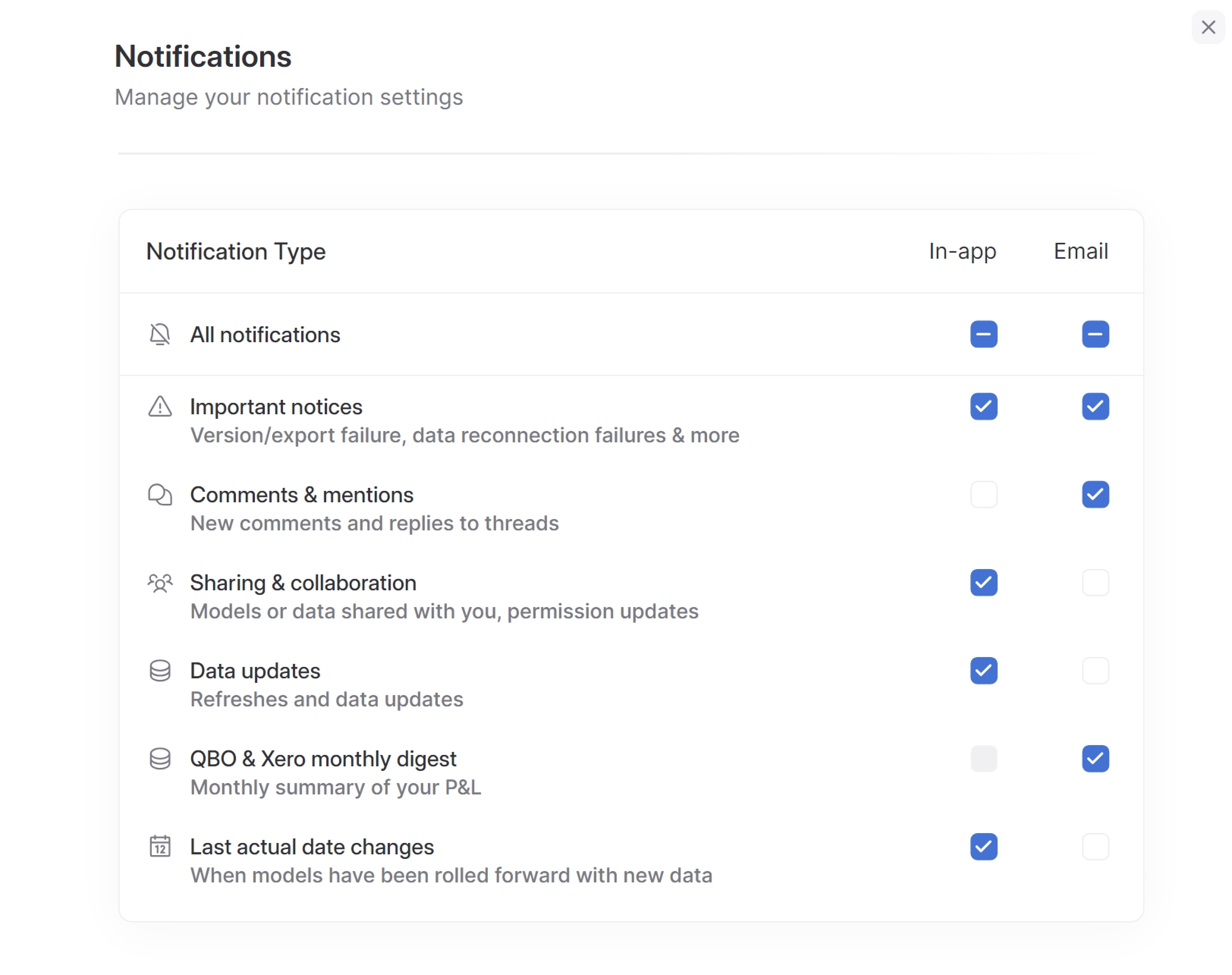Causal, a powerful alternative to traditional spreadsheets, helps businesses build dynamic financial models and interactive dashboards. The platform allows users to create complex, interconnected models that update in real-time, enabling more accurate forecasting and decision-making.
Causal realized that alerts about changes in data could be a key differentiator for their product. That’s why the team prioritized enhancing Causal’s notification experience with educational and relevant cross-channel product messages.
- Causal replaced their legacy email notification system with Knock, significantly improving developer productivity
- Knock's multi-channel support enabled Causal to expand from email and in-app notifications to Slack to reach their enterprise customers
- Causal leveraged Knock's workflow builder to create complex notification logic, including batching and delays
- The adoption of Knock resulted in faster development cycles, enhanced testing capabilities, and improved customer support
The situation: outgrowing an inflexible email notification system
Causal's legacy notification system relied on sending emails directly through Mailgun with hard-coded HTML templates. This setup posed several challenges for the growing company. Charlie Crisp, Software Engineer at Causal, explained the friction: "With our original system any change to any message was terrifying. It was hard to prove that the right thing was happening."
This architecture created a bottleneck for the engineering team. Updating messages or adding new notifications required engineering involvement, severely slowing down the deployment of new work.
As Causal's user base grew and the platform evolved, the need for customer engagement through notifications became apparent. Users needed timely updates about model changes, collaborator actions, and system alerts. The existing system couldn't keep up with these demands, pushing the team to seek a more robust solution.
The solution: adopting Knock for scalable, multi-channel notifications
After evaluating several options, including building a custom solution, Causal chose Knock to revamp their notification system. Crisp and his team evaluated notification infrastructure solutions, including open-source alternatives and other commercial products.
"Knock stood out for several reasons”, Crisp revealed. “Its comprehensive API and clear documentation allowed us to get a proof of concept running within days. The multi-channel support aligned perfectly with our vision for future notification capabilities.”
Key factors in Causal’s decision included:
1. Comprehensive API and documentation: "Knock's documentation had all the different bits you would expect," Crisp noted. "It talks you through the core concepts, has a quick start guide, and enabled us to get a proof of concept running within a few days".
2. Multi-channel support: Knock's ability to handle email, in-app, and Slack notifications out of the box was crucial for Causal's plans to reach customers where they are most likely to pay attention.
3. Workflow management tools: Knock’s workflow builder allowed Casual to visually create complex notification logic, including batching and delays, without writing custom code.
4. Scalability and reliability: Knock's reputation with SaaS companies that are similar to Causal gave the team confidence that Knock’s infrastructure could handle their product’s growing volume of notifications.
How Causal integrated Knock
“What would have taken us many months to build ourselves, we implemented with Knock in a few weeks”
This speed allowed the team to focus on core product features rather than getting bogged down in notification infrastructure.”
Causal began by migrating email and in-app notifications to Knock and was impressed by the increased developer velocity.
"We started with Knock’s React components, but we created some of our own components and styling because we had specific designs that diverged a bit from the out-of-the-box Knock components," Crisp explained. This approach allowed Causal to maintain their unique user interface while avoiding being chained to a third-party design.
The team also used Knock's workflow builder to create a better notification experience for their users. Crisp highlighted its value: "The workflow builder let us implement sophisticated batching and delay logic that would have been incredibly time-consuming to build from scratch. It's intuitive to edit workflows, and the visual representation makes it easy to understand and modify our notification processes."
Causal also gave users the option to control how they want to be notified rather than opt-out of all notifications. This preference center was simple to implement using Knock.

Lastly, Causal saw a need to reach their business users outside of the product and email. They decided to expand their usage of Knock to include Slack. Business chat is an emerging and important channel to reach enterprise users, and Knock provides tooling for both Slack and Microsoft Teams.
“Communicating with customers through Slack is a nice pattern we’ve created”, Crisp explained. “With Knock we set up an automation that sends product information into the customer’s Slack channel on a semi-regular basis. The people who care about it can subscribe to that channel and use that as a news feed.”
The results: improved developer experience and customer engagement
By adopting Knock, Causal transformed its notification system from a point of friction to a robust, scalable solution that enhances both developer productivity and user engagement.
Causal used Knock to create a differentiated product experience that reaches users not just within their app, but over email and Slack. This multi-channel approach has improved user engagement as Causal’s users receive notifications where they're most likely to see them.
Crisp concluded, "We're very happy with Knock. It's been a great tool and a great team.”